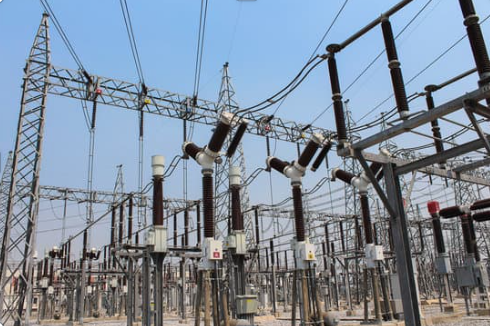A Comprehensive Dive into Sulfur Hexafluoride Leak Detection Technology Techniques
In recent years, the emphasis on eco-safety and the management of GHGs has ignited substantial interest in cutting-edge leak detection solutions. One such creation that has gained notice is the SF6 leak detection camera. This innovative device plays a vital role in locating leaks of sulfur hexafluoride, a potent greenhouse gas frequently used in electrical insulation and circuit breakers. As industries endeavor to meet stricter emissions regulations, grasping how these cameras work and their importance in detecting leaks has become ever more crucial.
SF6, though effective in its applications, poses a significant environmental hazard if it escapes into the atmosphere. With a global warming potential far more severe than carbon dioxide, the need for trustworthy and efficient leak detection methods is vital. The SF6 leak detection camera makes use of infrared technology to detect gas emissions, allowing technicians to locate leaks swiftly and accurately. In this article, we will delve into the inner workings of these specialized cameras, their applications, and their importance in protecting both our environment and industrial operations.
Introduction of Sulfur Hexafluoride Leak Detection Technology
SF6, or sulfur hexafluoride, represents a greenhouse gas that is widely used in electrical equipment such as circuit breakers and gas-insulated switchgear due to its excellent insulating properties. Still, its potential for contributing to climate change when leaked into the atmosphere has made the detection of SF6 leaks a critical concern for sectors that utilize this gas. Effective leak detection doesn't just help in environmental protection but also guarantees the security and efficiency of electrical systems.
The implementation of technology specifically designed for SF6 leak detection has evolved significantly in recent years. Various methods are available, including infrared cameras that can reveal SF6 gas emissions. These advanced cameras detect the unique spectral signatures of SF6, allowing for accurate localization of leaks. By using this technology, operators can swiftly address leaks, lessening the gas's release into the environment and lowering operational costs associated with lost gas.
In addition to thermal imaging cameras, alternative techniques may involve portable gas analyzers and continuous monitoring systems. However, the SF6 leak detection camera stands out for its ability to provide instant visual feedback and facilitate swift decision-making. This breakthrough in leak detection technology indicates a major step towards more sustainable practices in sectors reliant on SF6, aligning with global efforts to combat climate change and reduce greenhouse gas emissions.
Functioning Mechanisms of Sulfur Hexafluoride Gas Detection Devices
SF6 gas detection devices work founded on the principle of IR thermography, specifically designed to detect SF6 gaseous escape. The substance has specific IR absorbance traits, which allow specialized devices to identify it in different environments. When SF6 gas escapes from systems, it changes the thermal patterns of the surrounding area, producing clear patterns that the camera can record and understand. This method enables quick detection of leaks, limiting potential environmental and financial impacts.
The devices employ highly sensitive IR sensors that are tuned to identify the specific wavelengths produced by SF6 gas substance. When the device is pointed toward a potential leak site, it analyzes the thermal signals and compares it to reference readings. If the observed infrared readings go beyond a set limit, indicating the existence of sulfur hexafluoride, the camera's system notifies the operator. This method enables instantaneous visualization of gas leaks, simplifying to locate and address them promptly.
Field technicians can use sulfur hexafluoride leak detection devices in a range of settings, from substations to industrial environments. Their portability and ease of use render these cameras essential tools for maintenance teams. The devices not only enhance safety by minimizing human contact to toxic substances but also contribute to adherence with ecological regulations, ensuring that companies maintain their obligations to environmental responsibility and security in activities.
Advantages and Uses of SF6 Leak Detection
The SF6 leak detection camera offers many advantages that make it an essential tool for industries using sulfur hexafluoride. One of the main advantages is its ability to swiftly and accurately identify leaks in electrical equipment, gas-insulated switchgear, and other systems where SF6 is utilized. This capability ensures prompt maintenance and reduces the risk of environmental harm caused by SF6 emissions, which are potent greenhouse gases. By employing this technology, companies can greatly lower operational costs associated with SF6 leakage and enhance overall safety.
Another application of SF6 leak detection camera s is in preventive maintenance programs. Regular monitoring of equipment using these cameras allows for the early detection of potential leaks before they escalate into bigger issues. This anticipatory approach not only increases the life of the equipment but also ensures compliance with environmental regulations. Sectors such as power generation, utilities, and manufacturing gain greatly from embedding SF6 leak detection into their maintenance routines as it leads to increased reliability and operational efficiency.

Additionally, the SF6 leak detection technology finds its use in research and development sectors where exact measurement of gas emissions is crucial. Researchers can employ these cameras to study gas behavior and dynamics under various conditions, helping to innovate solutions that minimize leaks and enhance the performance of SF6-based systems. The flexibility of this technology supports a range of applications, making it a essential asset for maintaining environmental integrity while ensuring the efficiency of systems reliant on SF6.